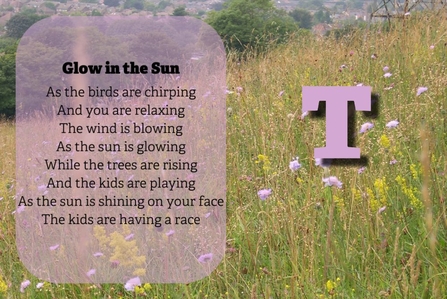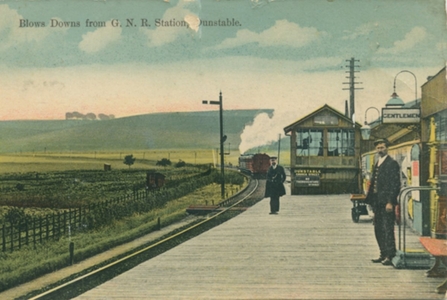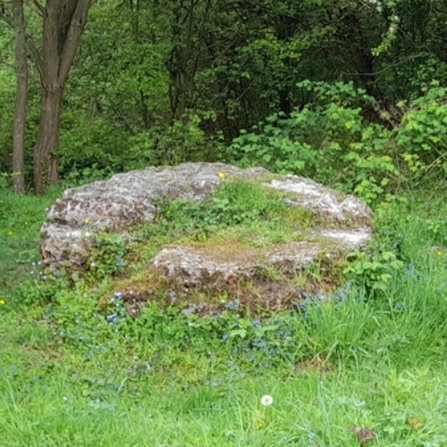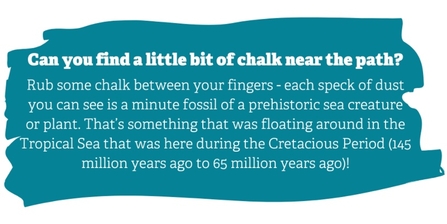Blow's Downs Heritage Trail
Welcome to the Heritage Trail here at Blow's Downs.
Alongside the poem below, written by a Beech Hill Primary School student, you will find the first letter of our puzzle anagram, continue along the trail to find and collect the other 4 letters and see if you can rearrange them to reveal the mystery word.

Poem by a Beech Hill Primary School student
Heritage Trail Map
You are currently at number 1 on the trail map; The Chalkpit.
Follow the footpath to find post number 2, or scroll down to find some more information about the Chalkpit.

The Chalkpit
Chalk was initially extracted around Dunstable to make whiting which was used for coating walls known as whitewash. Blow’s Downs chalk is most likely to have been used as a source of lime for the manufacture of Portland cement.

Postcard of Chalk Quarry, Blow's Downs. Credit: Mark Turner Collection.
The first industrial chalk extraction was shortly after 1885 probably by B J Forder.

Credit: John Alsop Collection.
A railway siding of The Dunstable, Luton and Welwyn rail link was constructed at the quarry to transport the chalk.

Credit: Julia Lewry
In 1915 the British Portland Cement Manufacturing Company acquired the lease for the quarry. Concrete markers with the letters BPCM can still be seen on Blow’s Downs today. The company name was changed to Blue Circle in 1978. The Wildlife Trust BCN acquired the site in 1995.

Credit: Sarah Cowling
Quarrying on Blow’s Downs ended before the start of the Second World War. The disused chalk pit was then used by the Home Guard as a training area. The Limekilns that were left from the old quarry were used for their target practice. The remains of one of these kilns can be seen opposite the main quarry.
Chalk is made up of the remains of plants and creatures that lived in the sea millions of years ago. These include marine animals called foraminifera and marine algae known as coccoliths. These are so tiny that thousands could fit on a single pin head!

